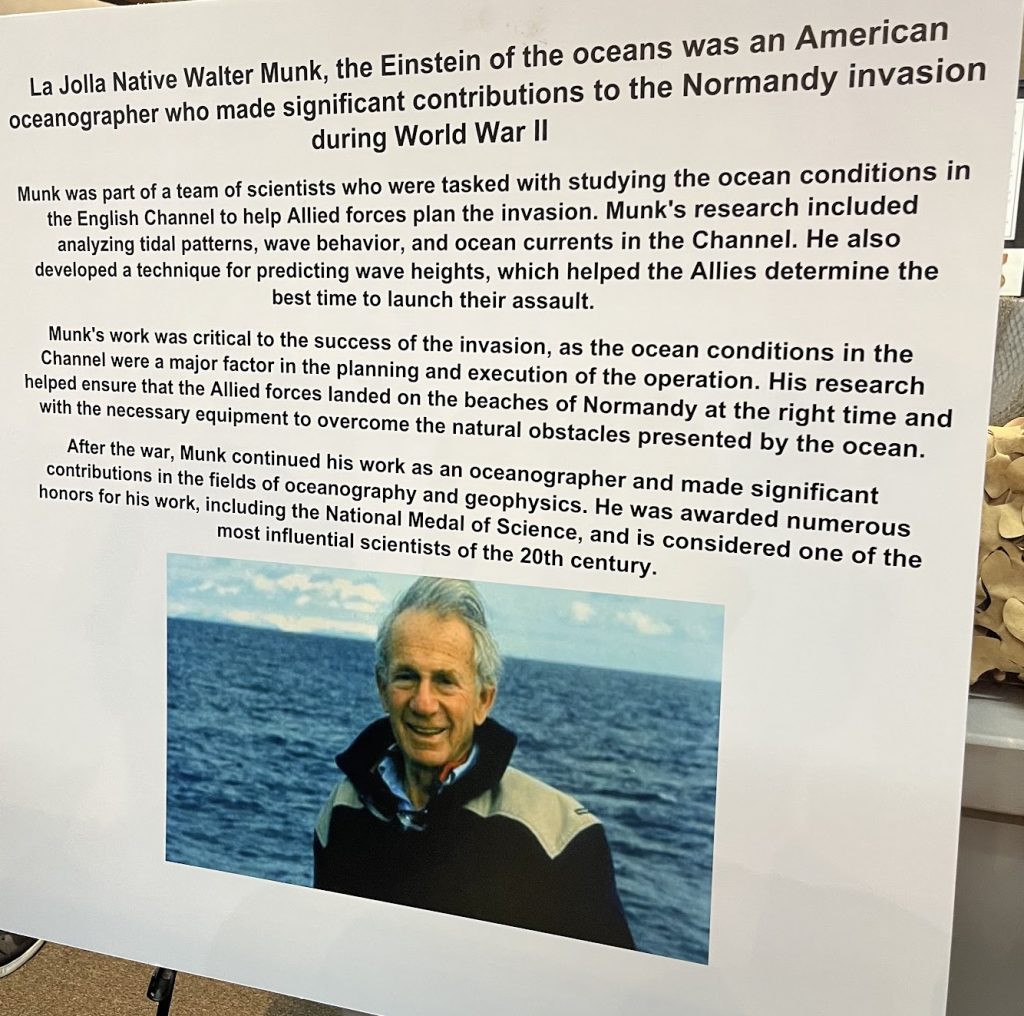Walter Munk & The Fascinating History of Wave Prediction

Oceanographer Walter Munk, who lived in La Jolla for much of his life, was a pioneer in the fascinating field of wave prediction. He died Feb. 8, 2019, at the age of 101, in La Jolla, but we remember and celebrate his legacy–which began in World War II.
Across the oceans, waves rhythmically rise and fall, illustrating the relationship of wind, water, and land. In understanding these waves, Walter Munk’s name emerges prominently. Often referred to as a leading figure in oceanography, Munk’s research significantly advanced wave prediction, a crucial component in naval and maritime operations.
While wave prediction might seem complex to some, its importance in oceanography is undeniable. It plays a central role in naval and maritime activities, from guiding ships safely to aiding in major marine operations.
Table of contents
Early Life and Background
Born in Vienna, Austria, in 1917, Walter Munk’s early life was surrounded by Austrian culture and architecture, not the ocean. However, the changing political landscape of Europe led him to move to the United States in 1932.
In the US, Munk passionately continued his education. After spending some time at the Massachusetts Institute of Technology (MIT), he was drawn to the Pacific. His decision to join the Scripps Institution of Oceanography in La Jolla, California, was a turning point in his life. Here, he began his significant research and forged a deep connection with the ocean.
Walter Munk’s Work During WWII
As the 1940s began, World War II ensnared nations into a vast conflict. This war wasn’t just about military tactics; scientific advancements were at its forefront. One such field was oceanography, which held critical significance for the Allies.
Understanding the importance of oceanographic knowledge, Walter Munk joined the U.S. defense efforts. The unpredictable oceans presented considerable challenges for amphibious landings—key operations where troops transitioned from ships to enemy shores. In this context, forecasting oceanic conditions wasn’t just helpful; it was vital for strategic planning.
During the war, Munk’s expertise proved invaluable. He devised techniques to predict waves, essential for planning naval maneuvers. Notably, his accurate wave predictions were crucial for the D-Day invasion of Normandy in 1944. With troops, equipment, and supplies pouring onto the French beaches, Munk’s accurate forecasts ensured smoother landings. This, in turn, significantly influenced the course of the war in Europe.
Munk’s contributions during WWII were twofold: not only did he aid the Allies during a critical time, but he also pioneered the methods for modern wave prediction, benefiting maritime activities for decades to come.
Wave Prediction: The Science Behind It
To the uninitiated, the vast oceans may seem chaotic, their waves rising and crashing without rhyme or reason. But beneath this seeming randomness, there lies a method to the madness, governed by a delicate balance of natural forces. Wave prediction, at its core, seeks to decipher this intricate dance.
Munk’s approach to wave prediction was nothing short of revolutionary for his time. He delved deep into the basic principles, understanding that waves are formed by the interplay of wind speed, its duration, and the area over which it blows, commonly referred to as the ‘fetch’. But Munk didn’t stop here. He delved deeper, incorporating factors like wave dispersion and the interaction of waves with currents and the sea floor.
Given the limited tools and technologies of his time, Munk’s achievements were even more impressive. By merging observational data, mathematical models, and an innovative mindset, he crafted forecasting methods that far surpassed those of his peers. His strategies offered a solid, scientifically-backed method for anticipating wave patterns, size, and timing.
Post-War Contributions
The end of WWII did not signify the end of Walter Munk’s illustrious career; rather, it marked a new beginning. Returning to the Scripps Institution of Oceanography, Munk continued to quench his insatiable curiosity about the oceans.
His post-war research ventured into diverse areas of oceanography. From studying ocean currents to deciphering tidal patterns and understanding wave propagation across vast distances, his explorations were both vast and pioneering.
Munk’s later years were also characterized by global collaborations. Teaming up with renowned oceanographers and institutions worldwide, they combined their expertise to uncover the ocean’s enigmas. These partnerships not only amplified individual findings but also elevated the entire field of oceanography through collective insights and growth.
Modern Contributions and Legacy
As the latter half of the 20th century unfolded, the world faced evolving challenges, with climate change becoming a pressing concern. Walter Munk stood at the forefront, identifying its significant implications for the oceans.
Munk made notable strides in understanding climate change’s effects on sea levels and ocean currents. He explored acoustic thermometry, using sound waves to gauge ocean temperatures over large areas. This work not only enhanced the comprehension of underwater sound transmission but also offered critical insights into oceanic warming.
“Munk’s enigma” emerged as a fascinating aspect of his research. It focused on the discrepancy between actual global sea level rises and predictions based on ice melt and thermal expansion. His unyielding quest for clarity exemplified his dedication to scientific integrity.
Over his distinguished career, Walter Munk garnered many honors and awards. These not only celebrated his individual contributions but also highlighted his lasting influence on oceanography and our grasp of the oceans.
Photo Credit: Photo of Walter Munk museum exhibit copyright LaJolla.com





